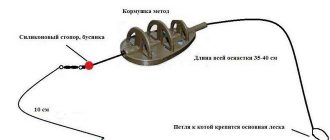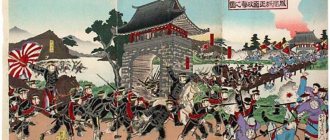Story
It is possible to sentence a citizen to death only in some developed countries. Capital punishment is applied by court decision and is used if guilt in an extremely serious crime is proven. The Land of the Rising Sun allows execution by hanging.
Society's approval of capital punishment is partly due to history and traditions. In the past, death was a frequent punishment for loss of honor, disloyalty to a master, or a mistake that was insignificant by today’s standards. Seppuku - the suicide of a samurai who committed a mistake - is one of the most famous features of medieval Japanese life. The tradition was based on the ideas of loyalty, honor, and impeccable reputation. Seppuku was allowed only to members of the privileged class. The one who committed seppuku could be proud of this, although from the point of view of a modern civilized person this is impossible.
The tradition of the death penalty goes back centuries
In the past, the sentence of death by seppuku was a privilege of the middle class, while execution was considered a disgrace for the offender and his family. From an early age, boys and girls were taught to perform seppuku, and were instilled with the idea that this ritual is the honor and advantage of samurai. The change in perception began in 1664, when Shogun Tokugawa Ieyasu banned suicide due to the death of a master. Seppuku was replaced by monastic vows, and the death penalty was revised by law.
Sentencing Guidelines
The rules developed following the trial of Norio Nagayama, a 19-year-old boy guilty of 4 robberies aggravated by murder, are now being applied. He committed crimes in 1968 and was punished for them in 1997. Initially, the criminal was sentenced to life imprisonment, but then the decision was recognized as incorrect and he was given the death penalty. Based on the results of the case, 9 criteria were formed to determine whether it is permissible to execute a person:
- heaviness;
- motive;
- the criminal's modus operandi;
- number of victims;
- feelings of the victim's loved ones;
- the impact of the event on society;
- age;
- criminal record;
- the offender's demonstrated willingness to repent.
Only a few developed countries use the death penalty
The number of victims influences the outcome of a trial more than other factors. If one victim is recorded, capital punishment is applied only in extraordinary cases, but statistics show that in 32% of cases the prosecutor’s demands are satisfied. If two people died, in 59% of cases the court will determine the death penalty. If the murderer’s victims were 3 or more people, the probability of satisfying the prosecutor’s request for capital punishment is 79%.
How executions are carried out in Japan
Japan is one of the few developed countries that retains the death penalty. From 2000 to 2009 alone, 112 people were sentenced to death in Japan, and 46 were executed. On average, a death row inmate waits 6 years for execution - he is killed by hanging. At the same time, 86% of Japanese are in favor of maintaining the death penalty.
It was only in 2010 that the Japanese government first revealed to local journalists what death row prisons looked like. It is known that there are 7 such death row prisons, but their location is not disclosed. Even on this excursion, Japanese journalists were taken on a bus with the windows closed.
The death penalty in Japan is only imposed for aggravated murder. There are 10 criteria by which this “aggravation” is determined. Among them, for example, are such questions as “were the relatives of the murdered person very worried” and “whether this murder caused a public outcry.”
Japanese justice is proud that 99% of verdicts ultimately turn out to be correct. Over the past 50 years, only once has it emerged that a death row inmate was sentenced unfairly. He turned out to be a certain 63-year-old man, who by that time had spent 17 years on death row for the murder of a 4-year-old girl. It is worth adding that Japanese justice is a record holder in another area: the courts there issue 99.8% of convictions, and in this regard the country even outperforms another semi-Asian power, Russia, where such convictions are 99.2%.
Meeting place between prisoner and priest
A long stay on death row is one of the conditions of the Japanese system. It is believed that during this time some new circumstances of the murder may emerge, and theoretically the convicted person may turn out to be innocent. On average, 5 years and 11 months pass from the moment of the sentence to its execution. The death row inmate spends all this time in a cell measuring 2x5 meters; he is forbidden to watch TV, listen to the radio or use a computer. For the entire duration of his imprisonment, he is entitled to only 3 books (of his choice). But the prison administration encourages death row inmates to play the board game “Go” – against themselves. You can also play chess with yourself. To better monitor the prisoner, an electric light is lit 24 hours a day in his cell.
Death row
The suicide bomber is taken out for a walk for half an hour, 3 times in the summer and 2 times in the winter, but he can take a shower every day for 15 minutes. The prisoners' meals are modest, amounting to only 1,500 calories per day. Meager food encourages death row inmates to work; this is encouraged by the prison management. The prisoners' monthly earnings (for gluing boxes or assembling simple parts) are 4-5 thousand yen (about 50-60 dollars). With this money you can buy additional products.
The condemned man learns about the upcoming execution half an hour before it. A Buddhist or Shinto priest comes to him (at the request of the prisoner). Japanese Christians can only pray themselves at a wooden cross in a special room. The prisoner is executed by hanging in a special room. There is a hook attached to the ceiling, and there is a special hatch in the floor. The suicide bomber stands on this hatch with a rope around his neck, and in the next room three guards simultaneously press buttons - only one of them works (this is done so that none of the 3 knows exactly who actually carried out the execution of the sentence), and the hatch opens.
After 20 minutes, the doctor comes to confirm death. Relatives of the executed person can later take the body and bury it at their discretion. Each of the 3 executioners receives a bonus of 20 thousand yen (about 230-250 dollars).
Public opinion in Japan is overwhelmingly in favor of maintaining the death penalty. If in 1999 79% of Japanese were in favor of it, then in 2009 – already 86%. Only 6% were against executions (the rest had no opinion). Various white human rights organizations (such as Human Rights Watch) are methodically calling on the Japanese government to come to its senses and abolish the death penalty. And every time the authorities methodically explain to human rights activists that Japan has its own cultural norms.
For minors
In Japan, a citizen who has reached the age of 20 is considered an adult. The country's authorities signed the Convention on the Rights of the Child and the International Covenant on Civil and Political Rights, thereby adopting a ban on the death penalty for criminals under the age of 18. If the age of the person who committed the serious act is between 18-20 years, the likelihood of the prosecutor requesting capital punishment is extremely low, but legally the possibility of its application exists.
Since 1966, capital punishment has been imposed on 10 minors who committed murder. Eight sentences were carried out; the last verdict was made in 2012.
Requesting the death penalty is a big responsibility for the prosecutor
Trade in "Night Gold" was widespread in ancient Japan.
Night gold is a phraseological unit that denotes a product of human activity, his feces, used as a valuable and balanced fertilizer. In Japan, this practice was used quite widely. Moreover, the waste of rich people was sold at a higher price, because their diet was plentiful and varied, so more nutrients remained in the resulting “product”. Various historical documents dating back to the 9th century detail procedures for toilet waste.
The importance of fairness
Attitudes towards capital punishment are ambiguous. Some countries (for example, the USA) practice such punishment, others have imposed a moratorium, but have not excluded it from the norms of the judicial system (Russia did this), while others have completely banned it on their territory (in particular France). In countries that allow capital punishment, they are usually in no hurry to carry out the sentence: a death row inmate awaits his fate for years, decades. Japan is no exception. Hundreds of people sentenced to death are waiting in prison.
The majority of Japanese consider the current system to be correct, fair, and reasonable. Surveys prove: 80.8% of citizens are confident that capital punishment is inevitable. The death of a murderer is an attempt by society to restore justice and punish the criminal, while at the same time protecting itself from a repetition of what happened. Since there is a possibility of a miscarriage of justice, the courts hesitate in executing the sentence, giving the convicted a chance to be acquitted and have the case reviewed.
The Japanese believe that the death penalty gives the victims' relatives a sense of peace and revenge. It is known that many serious crimes in the country are committed by loved ones of people who have become victims of criminals. Not seeing justice in the verdict, they break the law, wanting retribution. A judicial system that allows the death penalty reduces the likelihood of such cases. Although the world is putting pressure on Japan to abandon current regulations, only 9% of the population believes that execution should be abolished. More than half of the country's residents are convinced that those who commit a particularly dangerous act must give their lives.
The death penalty is a subject of debate
There were and still are quite a lot of Christians in Japan
Christianity appeared in Japan in the mid-16th century. The first missionary to preach the Gospel to the Japanese was the Basque Jesuit Francis Xavier. But the missionary work did not last long. Soon the shoguns began to see Christianity (as the faith of foreigners) as a threat. In 1587, the unifier Toyotomi Hideyoshi banned the presence of missionaries in the country and began oppressing believers. To justify his actions, he pointed out that some Japanese converts had desecrated and destroyed Buddhist and Shinto shrines. The repressive policy was continued by Hideyoshi's political successor, Tokugawa Ieyasu. In 1612, he banned the practice of Christianity in his domains, and in 1614 he extended this ban to all of Japan[8]. During the Tokugawa era, about 3,000 Japanese Christians were martyred, while the rest suffered imprisonment or exile. Tokugawa policy required all Japanese families to register with the local Buddhist temple and obtain a certificate that they were not Christians.
death row
In Japan, death rows operate in the following cities:
- Tokyo;
- Osaka;
- Nagoya;
- Sendai;
- Fukuoka;
- Hiroshima;
- Sapporo.
Death row facilities are not prisons, and criminals have fewer rights than ordinary prisoners. All persons are kept alone; communication, physical exercise, television are prohibited. Visits are strictly limited.
The capabilities of suicide bombers are limited
Execution of the sentence
The execution warrant is issued by the Minister of Justice after consultation with the ministry. After signing, 5 days are allotted for delivery. The death row inmate learns of the decision on the morning of the last day of his life.
It is prohibited to execute criminals on national holidays, on Saturdays and Sundays, and from December 31 to January 2.
The method of carrying out the sentence is hanging in a special cell. The family, representatives of the convicted person, and the media will learn about the event after the verdict is enforced. Since 2007, it was decided to publish the names and ages of those executed and the list of offenses they committed.
The criminal learns about the execution on the day of death
Efficiency of the country's justice system
Capital punishment is used extremely rarely in Japan and only in cases of very brutal crime.
Opinions vary about the impact of the death penalty on the effectiveness of the justice system. Sociologists believe that the institution of capital punishment is ineffective and does not curb the growth of crime. Otherwise, countries that abandoned this method would face a surge in serious crimes.
Opponents of this position believe that the most severe punishment and the way it is talked about in the media instills fear in people and limits their ability to take serious action. Statistics are cited as an argument: Japan has a low crime rate in general, and serious crimes in particular. The country is rightfully one of the safest in the world.
Recent executions
The most high-profile case of recent times is the punishment of Satoshi Uematsu, who in 2016 carried out a massacre in a house for people with special needs. 19 people became victims of the killer, 20 were injured. Satoshi Uematsu worked at the institution for 3 years and committed a crime a few months after his dismissal.
The last death penalty in Japan was carried out on December 26, 2019. Wei Wei, a Chinese citizen who killed a family of three in Fukuoka in 2003, was punished. Together with him, two Chinese citizens took part in the crime and soon fled to their homeland. One of them was sentenced to life imprisonment, the second was executed.
The culprit must be punished
Perhaps this type of punishment is still practiced in Japan thanks to its centuries-old traditions, because for a long time the guilty person in this country had to pay with his life. Previously, this outcome was facilitated by customs that said that any shame could be washed away only with blood, but unlike our time, in the era of the samurai, death could be noble.
In this case, the convicted person had the right to commit seppuku (ritual suicide by ripping open the abdomen followed by decapitation), after which he could be buried with full honors. However, with the advent of the Meiji era and the ban on the free use of weapons, the tradition became obsolete. The death penalty in Japan through seppuku was no longer practiced; other methods, on the contrary, denigrated the condemned, so this measure of punishment was no longer noble.










